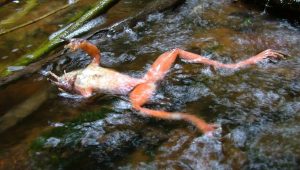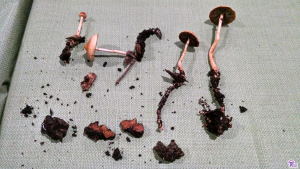Spring 2018 Fungal News Update
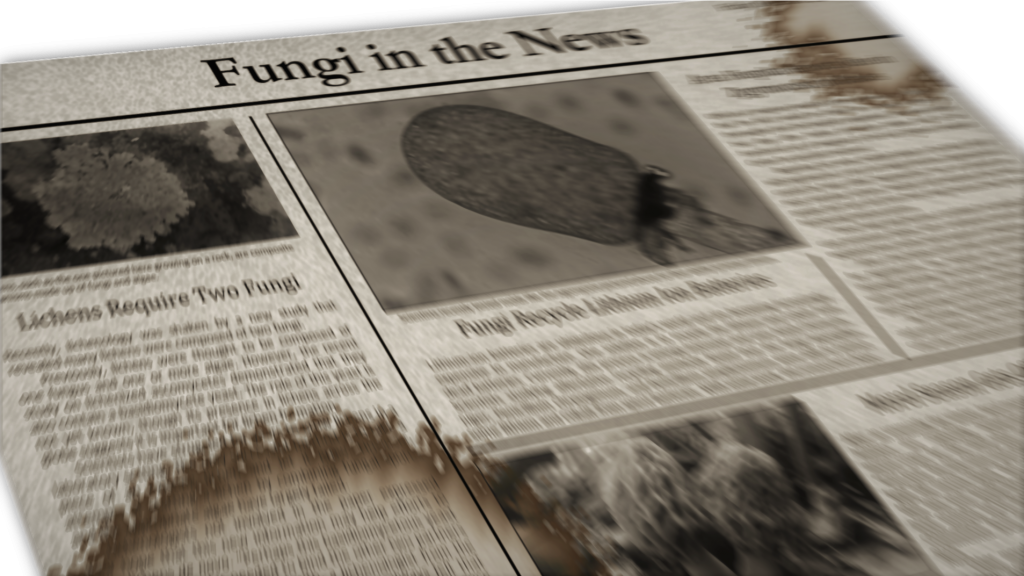 Fungi appear in the news with surprising frequency. However, many of those stories do not provide any new information. Below is a summary of news stories that have taught me something about fungi from mid-February through mid-May 2018. Read each summary to learn about: gut fungi, ambrosia beetles, gravity detection, prehistoric mushroom use, diseases of toes, ants, frogs, bats, and ohia trees, and more.
Fungi appear in the news with surprising frequency. However, many of those stories do not provide any new information. Below is a summary of news stories that have taught me something about fungi from mid-February through mid-May 2018. Read each summary to learn about: gut fungi, ambrosia beetles, gravity detection, prehistoric mushroom use, diseases of toes, ants, frogs, bats, and ohia trees, and more.
With the growing concern over untrustworthy news sources and the media’s tendency to inaccurately report scientific studies, can these sources be trusted? Yes they can, with a bit of caution. I have checked to make sure all the articles based on scientific papers draw from peer-reviewed journals and that they accurately reflect the content of the papers. For articles not linked to scientific papers, I try to stick to sources with a good track record in reporting on science or to local sources for region-specific information. However, I encourage you to do your own research and decide for yourself whether these sources are trustworthy.
Toenail Fungus Reproduces Only Asexually
Scientists from Duke University’s School of Medicine found that Trichophyton rubrum, the fungus that causes toenail infections and athlete’s foot, cannot reproduce sexually. The team took samples of the fungus from around the world and encouraged the fungi to mate for five months without success. T. rubrum seems to have given up its ability to reproduce sexually in order to infect humans. Since it cannot use sexual reproduction, the fungus will have a difficult time adapting to any new antifungal treatments used against it. This means it is likely that humans will be able to eradicate the disease sometime in the future.
Read more at: http://www.bbc.com/news/health-43169443
Zombie Ant Fungus Avoids Social Immunity
The “Zombie Ant Fungus” is a fungus that infects ants and after a few weeks takes control of their actions before killing the ants and fruiting out of their heads. The pathogen can be very aggressive and is capable of wiping out entire ant colonies (for more, see FFF#006). Traditionally, mycologists believed that ant colonies dealt with the fungus using “social immunity”: they attack infected ants and remove them from the colony to prevent spread of the infection. However, a recent Pennsylvania State University study suggests that ants cannot detect when their nestmates are infected. In an experiment, scientists grew colonies of carpenter ants in the lab and infected some of the ants with the Zombie Ant Fungus. The colonies did not react aggressively to the infected ants, although the infected ants spent more time near openings to the nest. This was a small-scale study, but it suggests that the fungus does not trigger a social immunity response.
Read more at: http://www.newsweek.com/zombie-apocalypse-ants-cant-tell-when-their-colony-overrun-deadly-fungus-843379
Rubber Ducks Harbor Harmful Bacteria, Fungi
Rubber ducks – the classic child’s bath toy – are in water a lot so it’s not surprising that things grow inside them where it’s hard to clean. A group of researchers from the Swiss Federal Institute of Aquatic Science and Technology, ETH Zürich, and the University of Illinois analyzed the contents of 19 bath toys plus six that were only exposed to a more controlled environment in the lab. 80% of the toys were found to contain potentially harmful bacteria and just over half of the toys squirted fungus-containing water when squeezed. The study’s authors recommended that parents regularly clean or replace their children’s bath toys and avoid squirted water from bath toys into their children’s faces.
Read more at: https://www.huffingtonpost.co.uk/entry/truth-rubber-ducks_uk_5abb8bb2e4b04a59a3130f18
Most Gut Fungi Just Passing Through
The human gut harbors lots of organisms, including fungi. However, a new study from Baylor College of Medicine found that most intestinal fungi enter the body with the foods we eat and exit without establishing themselves in the gut. This study used a few different experiments to examine where gut fungi come from and whether or not they thrive in human intestines. In one experiment, volunteers ate diets that included foods that host only a few known fungi. After a couple days, the only fungi found in stool samples came from the food or the volunteer’s mouth. In another experiment, volunteers were asked to brush with a toothpaste high in fluoride to kill fungi in their mouth. DNA analysis showed that the levels of mouth-inhabiting fungi in the stool samples were 100 times lower than normal. A third experiment had volunteers eat a diet that avoided Saccharomyces cerevisiae (brewer’s yeast, found in beer, wine, bread, and other foods). After two days, S. cerevisiae could not be detected in stool samples. All these experiments suggest that fungi in the human gut enter with the food we eat or normally live in the mouth but do not establish themselves in the gut and do not grow in the gut.
Read more at: https://cosmosmagazine.com/biology/just-passing-through-fungi-not-part-of-the-gut
Some Frogs Developing Resistance to Deadly Disease
Frogs have had it rough recently, thanks to a deadly disease called “chytridiomycosis” that has spread across the globe and killed untold numbers of frogs, often wiping out entire frog species. The disease is caused by the fungus Batracochytrium dendrobatidis (Bd) and kills the frogs by interfering with their skin, which is essential for proper regulation of frog body chemistry (see FFF#157 for more). Thankfully, some frogs appear to be developing a resistance to the fungus. Researchers from the University of Nevada, Reno found that although the genetics and virulence of Bd have remained the same in Panama, some Panamanian frog populations were rebounding because they were better able to fight off the fungus. The researchers don’t know how the frogs are able to evolve faster than the fungus (which has a shorter life cycle), but it offers hope for global frog recovery.
Read more at: https://www.wired.com/story/some-frogs-may-be-developing-a-resistance-to-the-disastrous-chytrid-fungus/
Bat Disease Now in Central Texas
The disease of bats known as White Nose Syndrome (WNS) was recently detected in colonies of Mexican free-tailed bats in central Texas. WNS is caused by the fungus Pseudogymnoascus destructans and has caused massive die-offs of bats in the eastern United States (see FFF#026 for more). The disease is particularly deadly for hibernating bats, so non-hibernating bats like the Mexican free-tailed bat are not expected to be significantly impacted by WNS. However, conservationists are concerned that the migratory patterns of Mexican free-tailed bats could spread the fungus into other parts of the United States or even other countries where there are susceptible bat populations.
Read more at: https://tpwd.texas.gov/newsmedia/releases/?req=20180404a
Ambrosia Beetles use Alcohol to Grow Fungal Gardens
Ambrosia beetles are beetles that bore into dead or dying trees (potentially killing the trees in the process) and then deposit fungal spores into chambers they excavate. The fungi grow and decompose the wood, carefully tended to by the ambrosia beetles. The beetles eat only the fungi from their gardens, so they are very careful about which fungi grow in their gardens. Ambrosia beetles are known to be attracted to ethanol, which is released by trees in times of stress. The chemical serves as a signal for the beetles so they can identify the weakest trees. In a new study from scientists at the United States Department of Agriculture’s Agricultural Research Service and the University of Würzburg it was found that ethanol plays an even more important role in the ambrosia beetle’s life cycle. Ethanol actually promotes growth of the fungi planted by ambrosia beetles and kills other competing bacteria and fungi. This new insight could help researchers develop ways of controlling the beetles in areas where they are invasive and/or impacting food production.
Read more at: https://news.nationalgeographic.com/2018/04/beetles-alcohol-trees-insects-animals/
Two Fungi ID’d in Rapid Ohia Death
Ohia trees are large flowering trees emblematic of the Hawaiian Islands. Unfortunately, a new disease is killing off numerous ohia trees across the island chain. The disease is called Rapid Ohia Death or Ohia Wilt and is caused by a fungus. New research into the pathogen revealed that there are actually two fungal species involved, neither of which had an official scientific name. The new species were called Ceratocystis huliohia (the species name means “to change the natural state of ohia” in Hawaiian) and Ceratocystis lukuohia (the species name means “destroyer of ohia” in Hawaiian). These names are significant because it was the first time plant pathogens were given Hawaiian names. Both species can kill ohia trees, but C. lukuohia is by far more virulent. It appears that both species were imported to Hawaii from elsewhere: one is most closely related to Asian species of Ceratocystis while the other is more like the species found in Latin America. Researchers do not know how the fungi arrived in the islands or how they evolved to attack ohia. Hopefully, a better understanding of how the two fungi evolved will help scientists discover ways to combat the disease.
Read more at: http://www.hawaiitribune-herald.com/2018/04/17/hawaii-news/2-new-fungi-idd-as-cause-for-rapid-ohia-death/
Fungi Sense Gravity Using Stolen Bacterial Gene
For most fungi, mycologists don’t know how they sense gravity. But mycologists figured it out for the fungus Phycomyces blakesleeanus. This fungus senses gravity in a very similar way to plants and animals: detect where large crystals in a container settle. In the case of humans, the crystals are calcium carbonate and the container is the inner ear. In P. blakesleeanus, the crystals are composed of a protein called OCTIN and are contained in vesicles (tiny cargo bags inside cells). Strangely, the researchers found that the DNA sequence encoding OCTIN was nearly identical to the bacterial OCTIN gene, indicating the fungi stole it from the bacteria (there is more genetic diversity in bacterial OCTIN, so the bacteria have had the gene longer). Such transfers of genes between organisms are uncommon, but there are ways organisms can incorporate loose DNA into their own genome. Even more unusually, the fungual OCTIN produces crystals that are ten times larger than most bacterial cells and serves a different purpose in fungi than in bacteria. Most of the times when one organism steals genes from another those genes are used for the same purpose. Figuring out exactly how the bacterial OCTIN gene could have been transferred to a fungus and then gained a novel and useful function will require years of more research.
Read more at: https://blogs.scientificamerican.com/artful-amoeba/fungus-macgyvered-gravity-sensor-from-stolen-bacterial-gene/
Prehistoric Tinder Fungus Use
Detailed analysis of artifacts found at the Neolithic site in La Draga, Spain, have revealed that early European humans used mushrooms as tools to start and transport fires. Certain fungi, such as the Tinder Fungus (Fomes fomentarius, see FFF#189), are still used for that purpose today. However, 7300 years ago the fungi of choice were: Skeletocutis nivea, Coriolopsis gallica, Daedalea quercina, Daldinia concentrica, Ganoderma adspersum and Lenzites warnieri. These are all woody polypores that would be well suited to catching a spark and burning slowly. This discovery was only possible due to the unique environmental conditions at La Draga; in most places, the fungi would have decomposed long ago. The new finds demonstrate that the use of mushrooms was common among prehistoric Europeans.
Read more at: https://www.sciencedaily.com/releases/2018/04/180426102837.htm
Deadly Frog Disease Originated in 1950’s Korea
After years of speculation, scientists have finally identified the place on earth with the highest diversity of Batrachochytrium dendrobatidis (Bd, the organism causing the disease chytridiomycosis, is killing frogs all over the globe). By looking for slight variations in DNA sequences of Bd from across the world, the researchers discovered that the highest genetic diversity of Bd was centered in the Korean Peninsula. The place with the highest diversity is most likely where the organism evolved, so finding that area could help efforts to understand how the disease spreads and how the fungus’s native hosts cope with the disease. The genetic analysis also revealed that the most aggressive form of Bd evolved within the last 50-100 years. That coincides with a time when Korea became more integrated with global trade, which allowed the fungus to spread across the world.
Read more at: https://www.nytimes.com/2018/05/10/science/frogs-fungus-korea.html
Resistance to Fungicides Rising Alarmingly
A group of researchers published a study recently warning that fungi were developing resistance to antifungal drugs very quickly. Because fungi are so similar to animals on a cellular level there are very few classes of drugs that can kill fungi in the human body. Pathogenic fungi are quickly learning how to overcome all classes of antifungal drugs, which will make things like surgery and hospital visits much riskier. Additionally, fungi are evolving resistance to antifungals used on plants, which are sometimes the same drugs used in humans. Widespread resistance to antifungals used in agriculture could put the world’s food supply in jeopardy. The study’s authors recommended developing new drugs or methods of controlling fungi so that humans don’t run out of ways to kill unwanted fungi.
Read more at: https://www.usnews.com/news/health-care-news/articles/2018-05-18/treatment-resistant-fungal-infections-increasing-worldwide

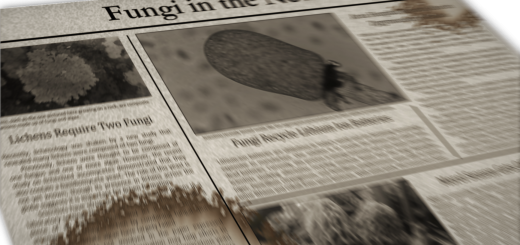

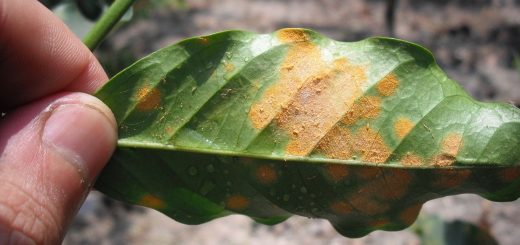





![#011: Characteristics of Kingdom Fungi [Archived]](https://www.fungusfactfriday.com/wp-content/themes/hueman/assets/front/img/thumb-small-empty.png)

